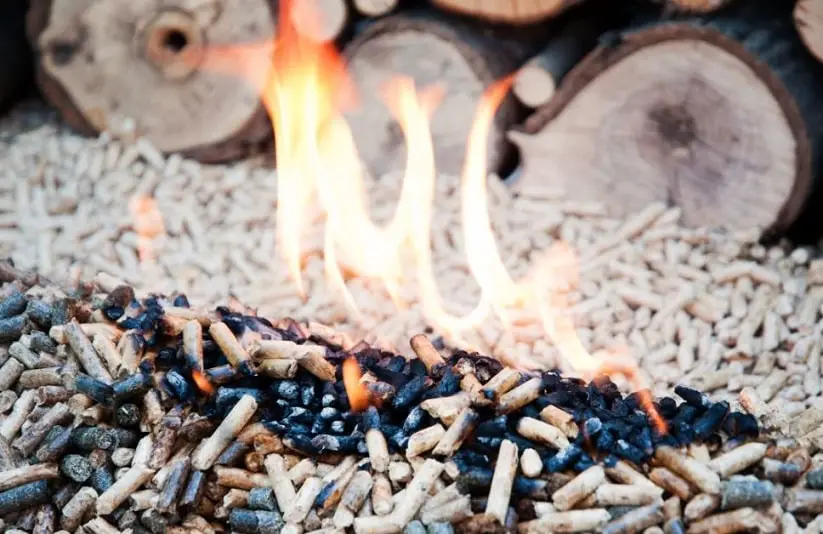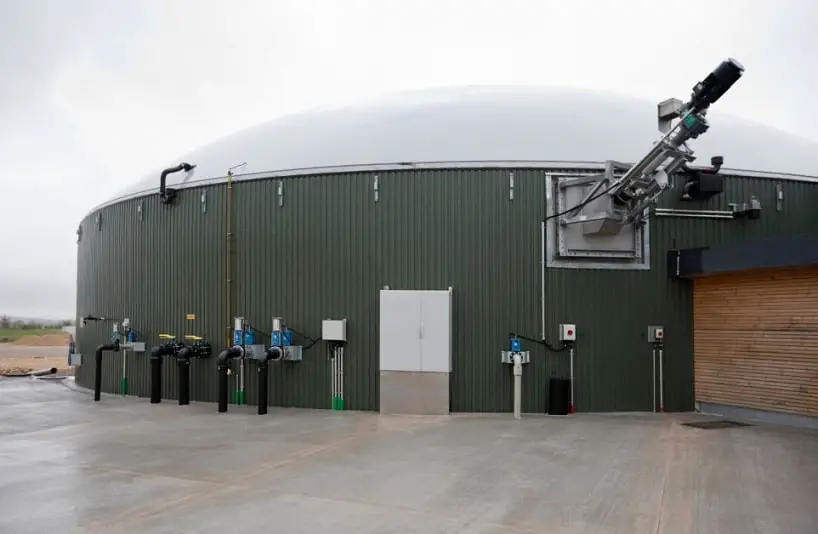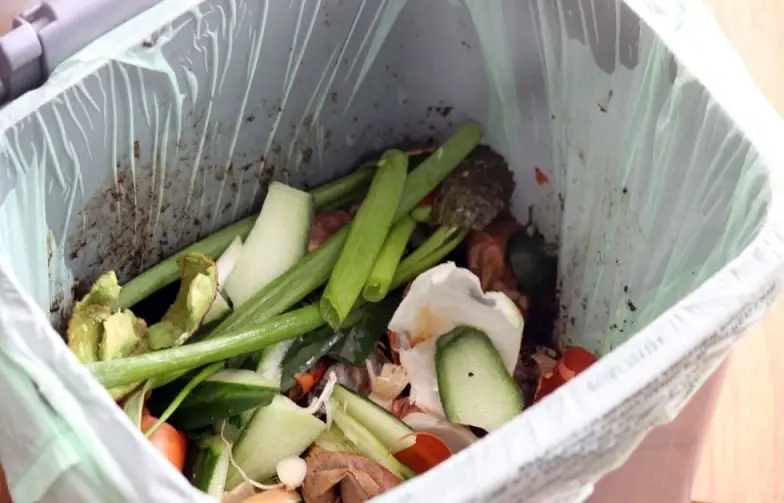What are the different ways of producing energy from Biomass?
Biomass energy is a sustainable energy source that can be utilized to produce both electricity and heat. This energy source plays a crucial role in reducing our reliance on non-renewable fossil fuels, and it also has the potential to create jobs and stimulate economic growth.
Biomass energy refers to the process of converting organic matter into energy. Unfortunately, this method is often misunderstood and erroneously thought of as merely burning waste for energy.

Although combustion is one of the most common methods of generating biomass energy, it is not the only one. There are many different methods for producing biomass energy.
Each method has applications in different industries or situations and comes with its own advantages and disadvantages.
In this post, we'll explore the different ways of producing biomass energy to give you a better understanding of this renewable resource.
There are two main ways to produce biomass energy: thermal and biochemical.
Thermal methods use heat to convert biomass into a usable form of energy, while biochemical methods rely on enzymes and other chemical processes to break down biomass into usable forms of energy.
Thermal methods of producing biomass energy rely on the combustion of organic matter to create heat. This heat is then used to produce steam, which can be used to generate electricity or power industrial processes.
Now, let's take a closer look at each of these methods.
Direct Combustion
Direct combustion is a thermochemical process that involves burning biomass in the open air or in the presence of excess air. Throughout this process, the chemical energy contained in photosynthetic biomass will be converted to gasses.
In a direct combustion system, biomass is burned in a combustor or furnace to produce hot gas, which is then fed into a boiler to produce steam, which is then expanded through a steam turbine or steam engine to produce mechanical or electrical energy.
Direct combustion often happens at temperatures ranging from 800 to 1000°C, and it is the most common way to generate energy from biomass.
This method can be used to process biomass with a moisture content of less than 50%.
When using direct combustion, it's important to control the combustion process both to maximize energy efficiency and to minimize emissions.
Direct combustion is the traditional method of producing biomass energy. It's simple, efficient, and can be used to process a wide range of biomasses.
It is essential to remember that only fuel gases burn and produce heat. Liquids and solids don't contribute to this process as they must first be vaporized.
Instead, they consume heat in order to be vaporized, which reduces the efficiency of direct combustion.
The main fuel intermediates of the combustion process are Methane (CH4), Carbon monoxide (CO), and hydrogen (H2). If properly applied, biomass combustion produces no greenhouse gas emissions compared to fossil fuel combustion.
Because the combustion of biomass releases carbon dioxide that has already been removed from the atmosphere via photosynthesis. Whereas combustion of fossil fuels increases carbon dioxide concentration due to the release of long-stored carbon.
Carbon dioxide is the most potent greenhouse gas in terms of global warming, and thus the use of biomass has no impact.
The released carbon dioxide during the combustion of biomass is immediately reabsorbed by new biomass growth, which makes the use of this energy source sustainable.
Biomass combustion occurs when oxygen reacts with the carbon in biomass. Because biomass fuels are largely composed of carbon, hydrogen, and oxygen, the primary byproducts of biomass combustion are carbon dioxide and water.
Depending on the heating value and moisture content of the fuel, the amount of air utilized to burn the fuel, and the furnace's structure, flame temperatures can sometimes surpass 2000°C.
In order for combustion to take place, it needs three things: fuel, air, and heat. Burning stops if any of these three are removed.
Combustion is self-sustaining when all three components are present in the proper ratio and the fuel provides extra heat to ignite continued burning.
To completely burn a biomass resource, you'll need a certain amount of air. We know the air is composed of approximately 79% nitrogen and 21% oxygen.
As a result, stoichiometric combustion of biomass in the air will produce carbon dioxide, water vapor, and nitrogen.
The carbon dioxide and water vapor are often referred to as the “product gas.” The nitrogen is not consumed in the reaction and leaves the system unchanged.
The combustion process is divided into three stages.
Drying
There is moisture in all biomass. This water must be removed in order for the fuel to burn. The water is evaporated by the heat of combustion, which uses a portion of the heat that would otherwise be available to generate power.
The amount of water contained in the fuel affects its heating value. The higher the moisture content, the lower the heating value.
The rate of drying and the final moisture content of the fuel is dependent on many factors, such as type of fuel, particle size, and airflow.
The drying process can be enhanced by using a pre-drying step prior to feeding the fuel into the combustion chamber.
Pyrolysis
Pyrolysis is the second stage of combustion and takes place when the temperature of the biomass increases to between 200-350°C.
At these temperatures, the biomass undergoes a chemical change and starts to break down into gasses and vapors.
Pyrolysis products include water vapor, carbon dioxide, hydrogen, methane, and other hydrocarbons. These products are referred to as the “product gas.” These gases mix with the oxygen in the air to form a yellow flame.
The heat from the burning gases is utilized to dry the fresh fuel and release additional volatile gases, making this process selfsustaining.
To keep this stage of the combustion process going, oxygen must continuously be supplied. In the end, the solid biomass is turned into a charcoal-like substance.
Oxidation
Oxidation is the third and final stage of combustion. It takes place when the temperature of the biomass increases to between 750-950°C. At these temperatures, the volatile gases released in the pyrolysis stage are combusted.
The burning of gases is a very exothermic process, which means it releases a lot of heat with a typically blue flame.
The heat from the burning gases is utilized to vaporize any unburned volatile gases and char, making this process self-sustaining. The gases released during this stage are mainly carbon dioxide and water vapor, with small amounts of nitrogen.
It is important to remember that all of the aforementioned stages can occur simultaneously within a fire.
However, they will not necessarily happen in the order listed. The rate at which each stage occurs is dependent on the type of fuel being combusted, the amount of oxygen available, and the temperature of the fire.
When all of the fuel's energy has been extracted, combustion is complete. To save fuel and increase the efficiency of the combustion process, it is essential to strive for complete combustion.
For complete combustion to occur, there must be enough air in the combustion chamber.
If there is not enough air, the fuel will not be completely burned and will produce carbon monoxide instead of carbon dioxide.
We can categorize direct combustion into four categories according to the type of boiler used:
- Pile burning
- Stoker-fired grade burning
- Suspension burning
- Fluidized bed
Pile burning
Pile burning is the most common form of direct combustion. It's often used in forest management as a way to clear large areas of land.
Pile burning involves stacking biomass in a pile and setting it on fire. The combustion process is then allowed to continue until the entire pile has been consumed.
Pile burning is a very efficient way to produce biomass energy. However, it can be difficult to control the combustion process, which can lead to emissions problems.
Stoker-fired grate burning
Stoker-fired grate burning is a type of direct combustion that involves feeding biomass into a furnace on a moving grate. The biomass is combusted as it moves through the furnace, and the resulting heat is used to produce steam.
Stoker-fired grate burning is a very efficient way of producing biomass energy. In addition, it's easy to control the combustion process, which minimizes emissions.
Suspension burning
Suspension burning is a type of direct combustion that involves suspending biomass in a chamber of hot air. The biomass is combusted as it is suspended, and the resulting heat is used to produce steam.
Suspension burning is a very efficient way of producing biomass energy. In addition, it's easy to control the combustion process, which minimizes emissions.
Fluidized bed
Fluidized bed technology is a type of direct combustion that allows the fuel to burn in a floating and agitated “bed” mixture of fuel and noncombustible minerals.
The main advantage of fluidized bed combustion is that it can be used to burn a wide range of fuels, including high-ash and low-grade fuels.
In addition, fluidized bed combustion is very efficient and can be easily controlled to minimize emissions.
How Much Air Is Needed to Complete the Combustion Process?
Complete combustion occurs when the oxygen and fuel are present in the proper ratio assuming all other factors are ideal.
The amount of oxygen required for complete combustion is dependent on the fuel being combusted. However, let's represent biomass chemically as CH2O.
To burn 30 pounds of biomass, you must supply 32 pounds of oxygen, which is accompanied by 105.3 pounds of nitrogen in the air (air is 21 percent oxygen and 79 percent nitrogen).
As a result, the required amount of air will be 32 + 105.3 = 137.3 pounds. In other words, it takes about 4.58 pounds of air to fully burn 1.0 pounds of bonedry (0 percent moisture content) biomass.
In addition to heat, this reaction will produce 18 pounds of water vapor, 44 pounds of carbon dioxide (greenhouse gas), and 105.3 pounds of nitrogen.
In other words, it takes approximately 4.58 pounds of air to completely burn 1.0 pounds of bonedry (0 percent moisture content) biomass.
In theory, stoichiometric combustion delivers the optimum fueltoair ratio, lowering losses and extracting all of the energy from the fuel.
However, in practice, stoichiometric combustion is impossible to achieve due to a variety of reasons, making 100% efficiency unfeasible.
In practice, in order to accomplish total combustion, the amount of air introduced into the combustion process must be increased to ensure that all of the fuel is burned.
Excess air is the amount of air that needs to be added to ensure that all energy is recovered. Depending on the fuel properties and system setup, the typical surplus air required for various combustion systems ranges from 5 – 50%.
Biochemical methods of converting biomass to energy are another way of producing biomass energy.
These methods use enzymes or other biological processes to produce biofuels from biomass. They use microorganisms to break down the complex carbohydrates in biomass and release useful products, such as biogas or bioethanol.
Fermentation
Fermentation is the process of breaking down carbohydrates in the presence of oxygen to produce carbon dioxide and alcohol. This process is carried out by microorganisms, such as yeast and bacteria.
The most common type of fermentation is ethanol fermentation, which is used to produce bioethanol. Ethanol fermentation begins with the breakdown of carbohydrates into sugars, such as glucose and fructose.
These sugars are then converted into ethanol and carbon dioxide by microorganisms. The end product of ethanol fermentation is called bioethanol.
Sugar-containing raw materials or those that can be converted into sugars can be utilized as fermentation substrates.
Directly fermentable sugary resources like sugar cane, starchy materials, and fruit and vegetable waste can be easily turned into bioethanol.
Indirectly fermentable resources like lignocellulosic biomass need to be pre-treated to release fermentable sugars.
Since these materials are difficult to break down, the microorganisms need help in order to access the fermentable sugars. Once the fermentable sugars are released, they can be used to produce bioethanol via fermentation.
For example, wood isn't directly fermentable. However, it can be converted into fermentable sugars by pre-treating them with enzymes or acids. These sugars can then be used to produce bioethanol via fermentation.
Because of their primary value as food and feed, conventional crops such as corn, sugar cane, and wheat are unable to meet the increasing demand for biofuels.
However, lignocellulosic substances like wood, grasses, and agricultural wastes can be used to produce biofuels via biochemical processes.
Agricultural wastes are inexpensive, renewable, and readily available. They can be used to produce bioethanol and other biofuels via fermentation.
Bioethanol from agricultural waste could be a promising technology, but it has various hurdles and limits. One of the main challenges is that agricultural wastes require pretreatment before they can be used for fermentation.
Proper pretreatment procedures can enhance fermentable sugar concentrations after enzymatic saccharification, boosting overall process efficiency.
To make the conversion of glucose and xylose to ethanol cost-effective, new fermentation technologies are required.
Another challenge is that the yield of bioethanol from agricultural waste is relatively low. However, research is ongoing and it is potential for these challenges to be overcome in the future.
The following are the objectives of an effective pretreatment process:
- Direct or indirect sugar production via hydrolysis
- To avoid sugar loss and/or degradation
- To keep the formation of inhibitory compounds under control
- To reduce energy demands
- To minimize costs.
Anaerobic digestion (Biomethanation)
Anaerobic digestion is a process that uses microorganisms to break down biomass in the absence of oxygen.
It is a sequence of chemical events that produce biogas, which is composed of methane and carbon dioxide.

The most common example of anaerobic digestion is the decomposition of organic matter by bacteria in a landfill. In this process, solid biomass is converted into biogas and other products, such as water and carbon dioxide.
An anaerobic digestion plant generates two outputs: biogas and digestate, both of which can be processed further or used to generate secondary outputs.
Biogas can be used to generate energy and heat, as a substitute for natural gas, and as a transportation fuel.
It can also be improved to create bio-methane, which is a renewable natural gas that can be used in the same way as conventional natural gas.
Digestate can be further processed to yield liquid and solid fertilizers, which can be used to improve soil quality and yield.
Due to its high nutrient content, it can quickly replenish the nutrients in the soil that have been depleted by traditional farming practices.
The main difference between fermentation and anaerobic digestion is that fermentation occurs in the presence of oxygen, while anaerobic digestion occurs in the absence of oxygen.
Composting
Although composting isn't technically a method of producing biomass energy, it is a way of managing biomass waste. Therefore, it is worth mentioning.

Composting is the process of decomposing organic matter, such as food scraps and yard waste, into a nutrient-rich soil amendment. Using compost can improve the quality of your soil, which in turn can increase the yields of your crops.
It can also help to reduce the amount of water and fertilizer that you need to use, and it can improve the drainage of your soil.
Every year, billions of tons of food scraps and yard waste are generated. If we can compost this material, it will reduce the amount of waste that goes to landfills, and it will also create a valuable product that can be used to improve our soils.
Therefore, composting is a win-win solution for both the environment and agriculture.





